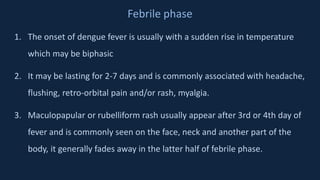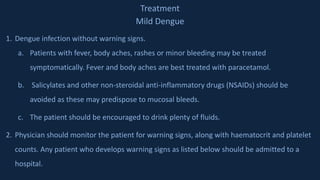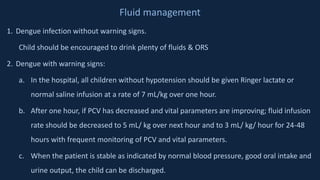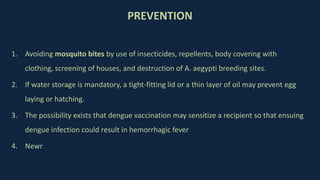1. Dengue virus is transmitted to humans through the bites of infected Aedes aegypti mosquitoes. It causes a range of illnesses from dengue fever to the potentially lethal dengue hemorrhagic fever/dengue shock syndrome.
2. There are four distinct types of dengue virus. Infection produces both neutralizing and non-neutralizing antibodies. Non-neutralizing antibodies can enhance viral entry and increase severity of infection through antibody-dependent enhancement.
3. Clinical manifestations are caused by a combination of mechanisms including antibody-dependent enhancement, cytokine storm, vasculopathy, and coagulopathy. Treatment involves fluid management and monitoring for warning signs that may require hospitalization.

























